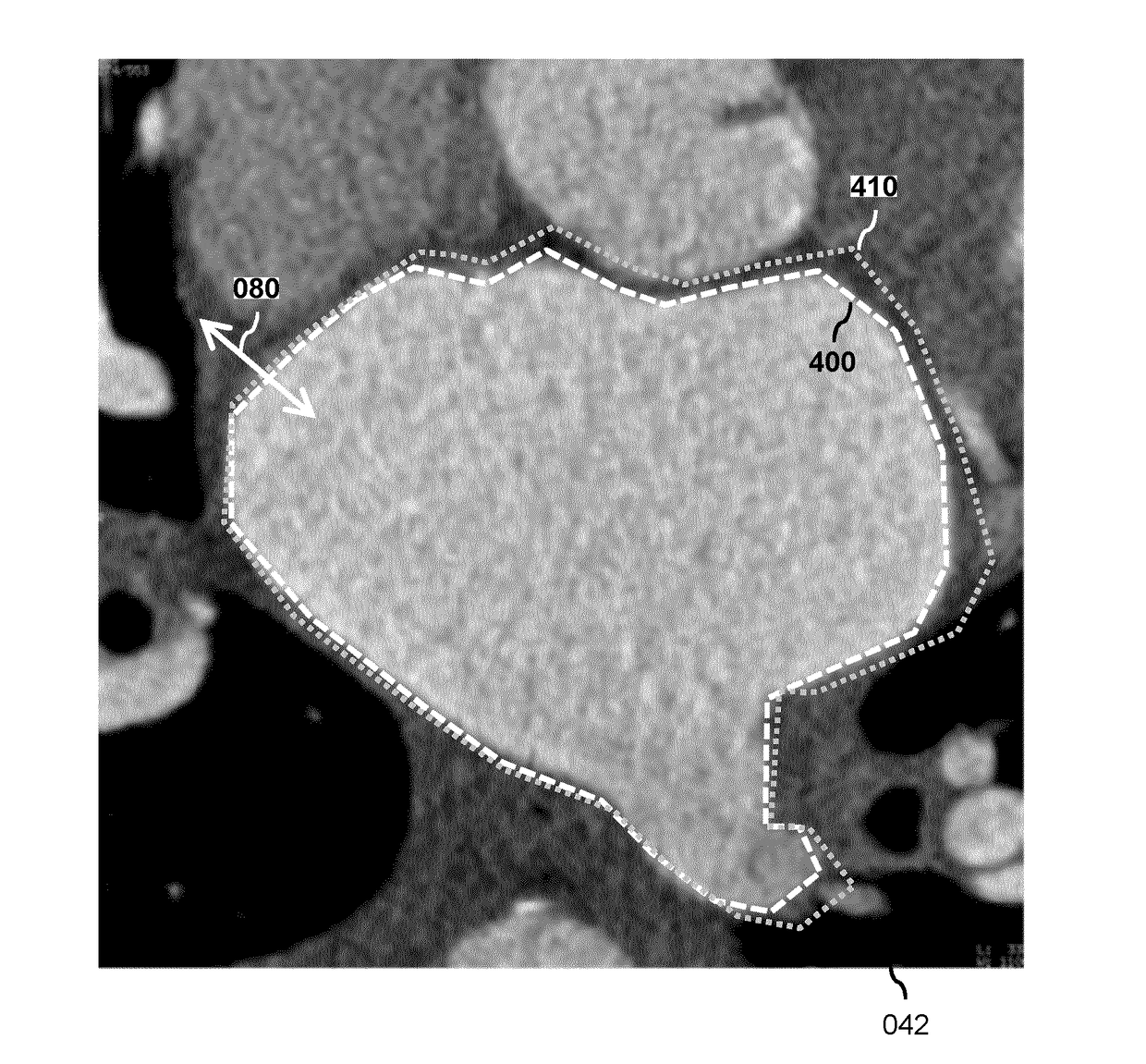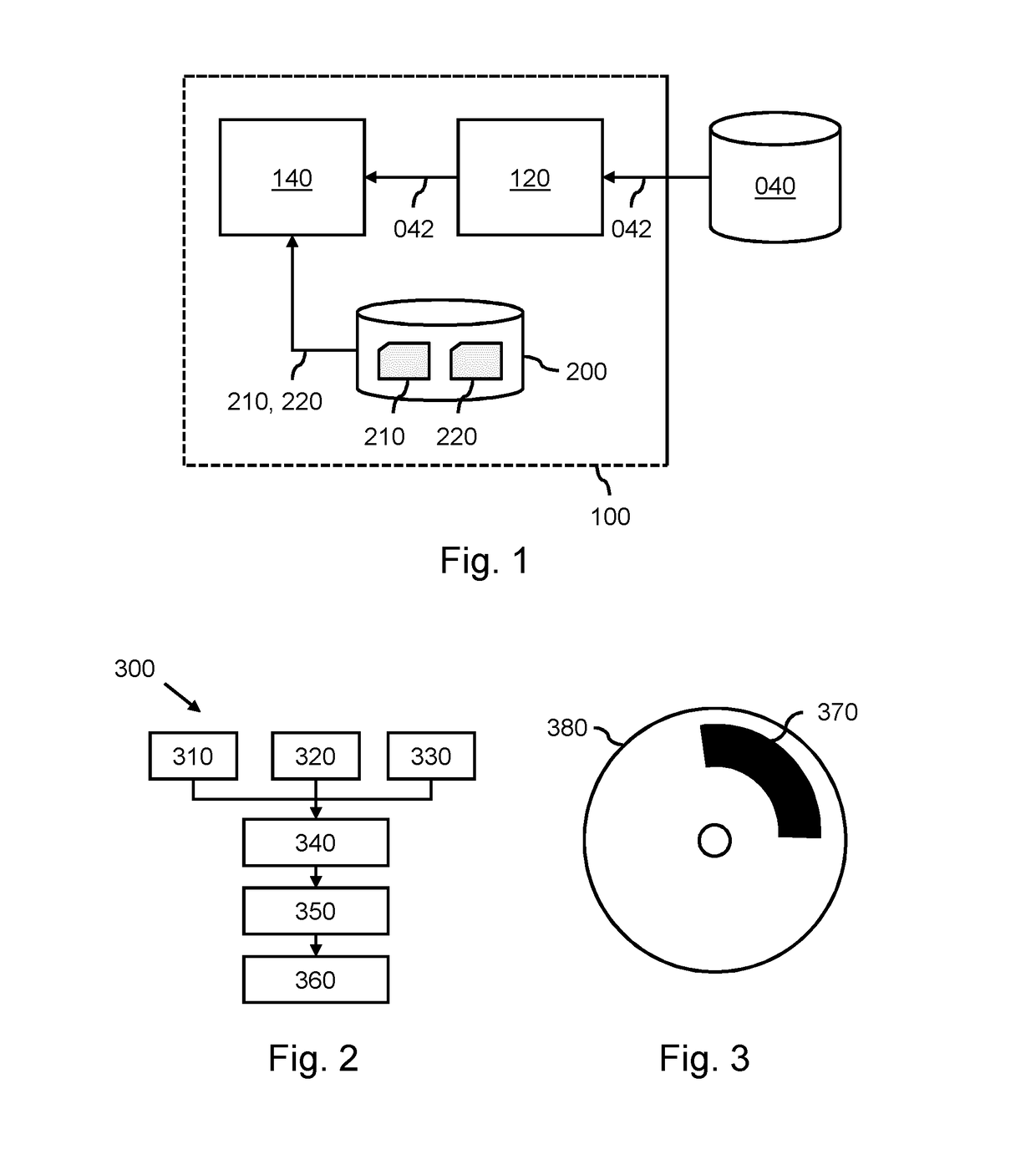Model-based segmentation of an anatomical structure
a model-based segmentation and anatomical structure technology, applied in the field of model-based segmentation of anatomical structure, can solve the problems of inadequacies in the fitting of achieve the effects of enhancing the visibility of otherwise poorly visible parts of the anatomical structure, enhancing the visibility of a surface, and enhancing the visibility of said surfa
- Summary
- Abstract
- Description
- Claims
- Application Information
AI Technical Summary
Benefits of technology
Problems solved by technology
Method used
Image
Examples
Embodiment Construction
[0064]FIG. 1 shows a system 100 for performing a model-based segmentation of an anatomical structure in a medical image. The system 100 comprises an input 120 for obtaining image data 042 of the medical image. For that purpose, the system 100 is shown to be connected to a database 040. For example, the database 040 may be constituted or part of a Picture Archiving and Communication System (PACS) of a Hospital Information System (HIS) to which the system 100 may be connected or comprised in. The system 100 further comprises a data storage 200 which comprises model data 210 defining a deformable model for segmenting a type of anatomical structure, with the deformable model comprising parts to be fitted to corresponding parts of the anatomical structure. The data storage 200 is shown to be an internal component of the system 100, and may be constituted by, e.g., a disk-based data storage such as a hard disk, a semiconductor-based data storage such as a ROM or RAM memory, a removable st...
PUM
 Login to View More
Login to View More Abstract
Description
Claims
Application Information
 Login to View More
Login to View More - R&D
- Intellectual Property
- Life Sciences
- Materials
- Tech Scout
- Unparalleled Data Quality
- Higher Quality Content
- 60% Fewer Hallucinations
Browse by: Latest US Patents, China's latest patents, Technical Efficacy Thesaurus, Application Domain, Technology Topic, Popular Technical Reports.
© 2025 PatSnap. All rights reserved.Legal|Privacy policy|Modern Slavery Act Transparency Statement|Sitemap|About US| Contact US: help@patsnap.com



